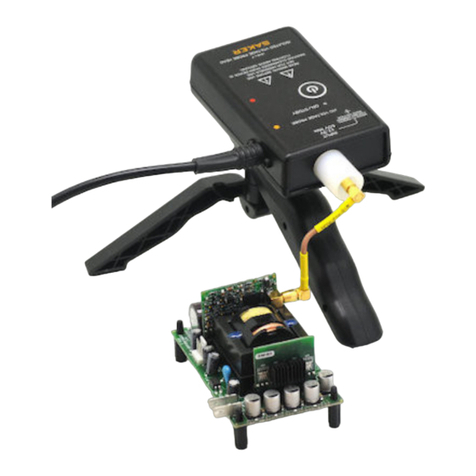Connect the receiver to the USB cable to power the unit, as long as it is powered the ON led
will light. To turn on the probe head press the TURN ON button. If the probe head fails to turn
on check if the batteries are dead, and replace them.
TURNING OFF
Turn off the probe head by pressing the TURN ON button shortly, the ON led will turn off.
To turn off the receiver disconnect the USB cable.
FIBER OPTIC CONNECTIONS
The probe head unit and the receiver are connected with a fiber optic cable. This is not the
same standard fiber cables as those found in a house installation. Although this cable has a 4
layer protection, be mindful that they are not as resilient as copper cables so do not bend them
sharply, avoid putting tension on cables and do not pull them, especially when kinks or knots
are present.
Also do not remove or bend the protective fiber optic cable boots since these protect the
connectors from dust and maintain the necessary alignment for proper accuracy.
CALIBRATION
Calibration is needed to adjust the analog parameters of the fiber optic link and correct for
offsets and temperature drifts in each unit. Every time the “Offset adj” button is pressed in the
receiver, the output is adjusted to zero, given that the input at the probe head has been
disconnected.
To adjust the gain of the signal, adjust the potentiometer found at the back of the receiver. To
do so, connect the probe head to a well known voltage source (for example the GEVP-OSC
oscillator) in the range permitted by the attenuator and adjust the amplitude of the signal seen
in the oscilloscope with the trimmer.






























